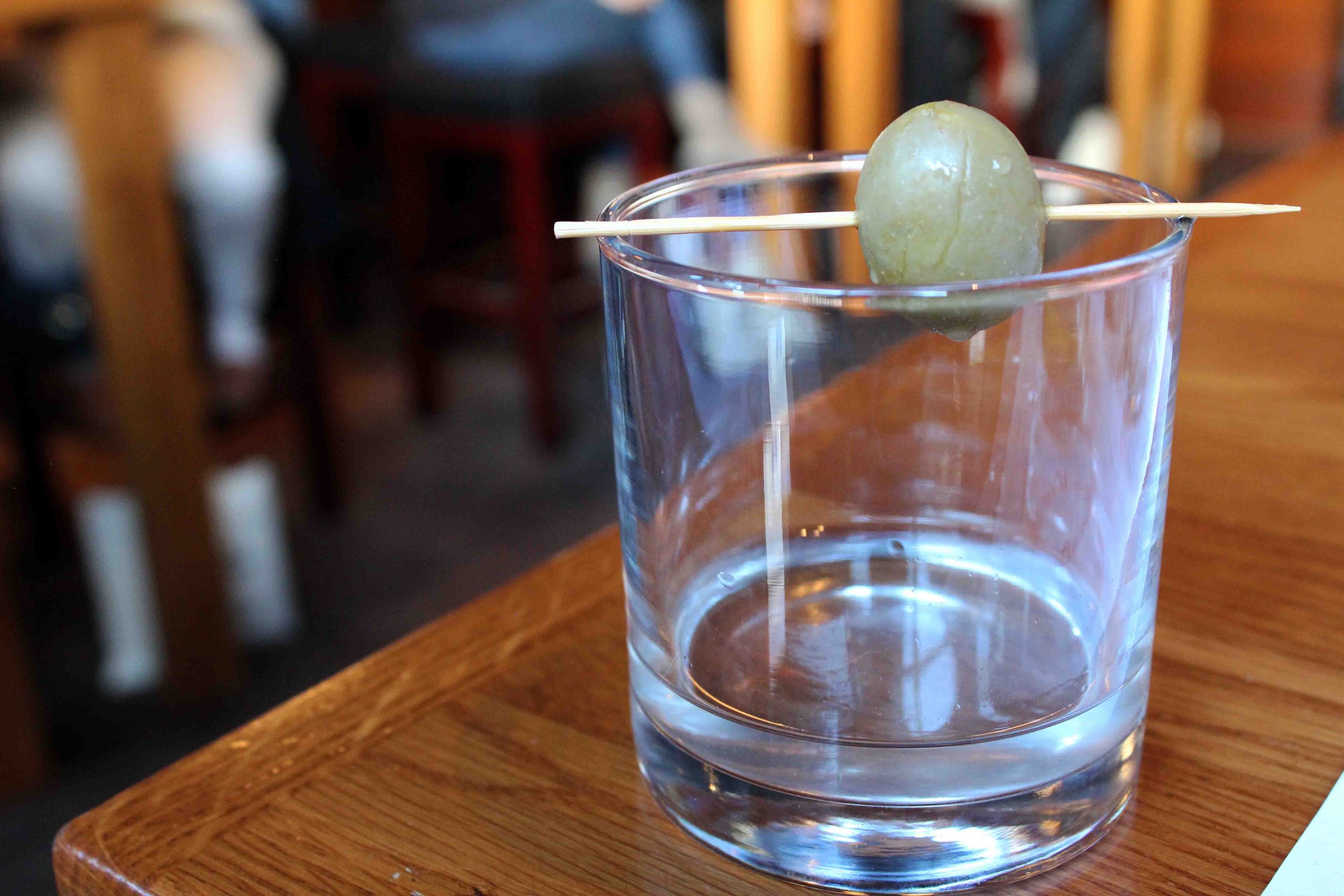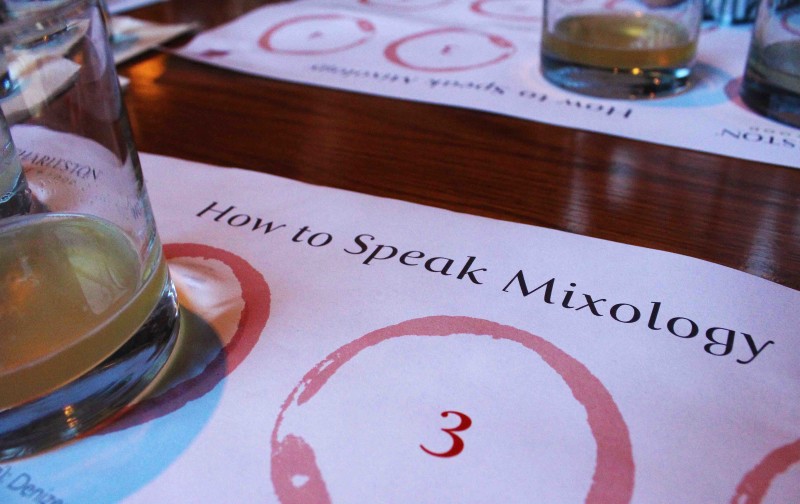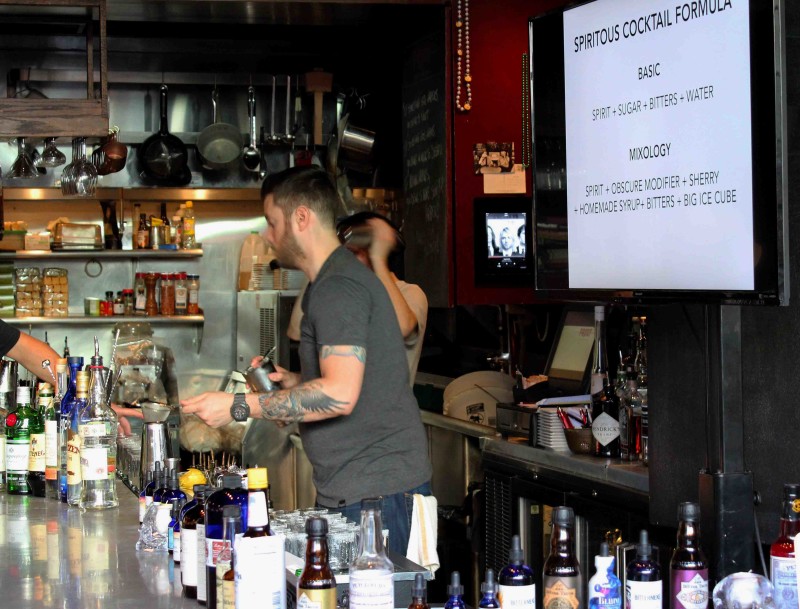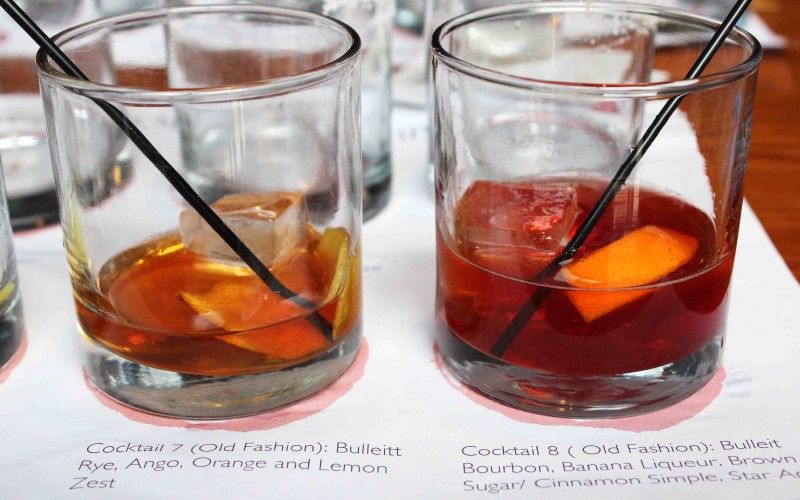


Everyone loves classic cocktails. And every bartender seems to have their own special twist on classic cocktail recipes—a dash of homemade bitters, a special garnish, an obscure modifier. But what if you knew the recipes for the ultimate, revamped mixology versions of these timeless drinks?
They don’t like to be called “mixologists,” but Josh Harris and Scott Baird of The Bon Vivants are certainly experts in the art of crafting cocktails. With a menu that changes every six months, their bar in San Francisco, Trick Dog, earned a 2015 James Beard nomination for Outstanding Bar Program and was included on the list of the World’s 50 Best Bars. So they know what they’re doing.
We sat down with Josh and Scott at the Charleston Wine and Food Festival to discuss innovative takes on classic cocktails. And you know what? Their “modernist” versions are incredible. Get the recipes below.
“We wanted to share both the traditional versions of these classic cocktails and what we would do to ‘mixologize’ them,” says Scott. Sometimes, he explains, menus can be a little pretentious, and sometimes chefs and bartenders aren’t inclusive with the knowledge they have. He sends this advice:

These days, consumers in this industry are more open-minded. People are more interested in mixology and visiting great cocktails bars. Scott explains how this is partly due to bartenders being more educated and seen as specialists. “Eight years ago, I made Cosmopolitans and Lemon Drops and that was it. It was a hard-earned fight to get an egg white into a drink, but times are changing.”
In the original definition of a cocktail, the definition that goes all the way back to Jerry Thomas’s book (the first drink book ever published in the U.S.: Bar-Tender’s Guide), a cocktail was a combination of spirit, sugar, and bitters. But things have changed since then, as Josh and Scott are about to show us with the modern versions of these classic recipes.
Here, we have two Daiquiris. Both have rum, lime, and sugar. The original Daiquiri and the modernist Daiquiri aren’t a comparison that Josh and Scott assert a preference over. “We think the original is one of the most delicious cocktails around. It’s not a statement of quality or uniqueness, we’re just showing what can be done,” says Scott.
Daiquiris are old and classic cocktails, dating back to the Jerry Thomas Bar-Tender’s Guide, when he was making drinks in San Francisco after the Gold Rush in the same way we make them now—using good, natural, seasonal fruit and ingredients, and making our own spirits. This version is light and sweet.
This modernist Daiquiri takes the original definition one step further, with spirit, sugar, bitters, citrus, and water. It’s a little darker. “When you get into the mixology space of blending flavors, you’re striving for balance but you’re also adding these other weird, nerdy ingredients, such as an obscure modifier like the Amaro Montenegro,” says Josh. “Pour it on a big, fancy ice cube and it looks delicious and reads well on the menu, and you have a mixology Daiquiri.”
The Daiquiri is a cocktail that Josh and Scott teach people to master because it easily transforms into other drinks. “A Daiquiri is the same as a Gimlet, only with rum instead of gin or vodka. You can go down this chain and the Margarita isn’t all that far from the Daiquiri.” Many of these cocktails can use spirits interchangeably.
Cocktail types vary across the world, but a Daiquiri is usually always going to be a Daiquiri. “You might see coconut sugar or cane sugar instead of white or brown sugar, but those simple substitutes make huge flavor changes,” says Josh.
It’s important to be able to identify and decipher these things on cocktail menus. In bars today, you’ll see a drink made of rum, cinnamon syrup, and lime, but it’s not called a Daiquiri. Scott says they see this variation with Manhattans and Old Fashioneds all the time. “People like to put bourbon or rye with sweet vermouth and some kind of bitters and call it a ‘house whiskey cocktail’, but it’s just a variation on a Manhattan.”

“I like my Margarita on the rocks, which doesn’t last long if it’s a good Margarita, but gives the ice a good little melt,” says Josh. He tell us why the Margarita is one of the hardest drinks to make. “It’s balancing the flavor of the tequila, the amount of orange liqueur you’re using, and the lime, which change with the seasons (they can be very acidic and bitter during winter), so you have to play with all that to balance it,” which, as we know, is the secret to the perfect cocktail.
Josh explains the difference between the recipe for the original Margarita and something that’s now internationally recognized as a “Tommy’s Margarita”. Tommy’s is a restaurant in San Francisco, where the now-owner’s father, Julio Bermejo, was responsible for all the tequila coming into the U.S.. “He created a Margarita that now, to mixologists like us, is nothing crazy—instead of tequila, triple sec (or cointreau), and lime, he used tequila, agave nectar, and lime. And this is a major distinction.” Josh explains that even though it tastes different, it’s still a Margarita. “It’s easier to balance and has a different mouth-feel. We’ll go all the way around the world and see it on cocktail menus.”

Time for two more drinks—two versions of the Martini. It’s a sophisticated, strong, and sexy cocktail, and while the history of how the Martini came about is much debated, the recipe today rarely varies.
This first one is a guilty pleasure in the bartending world, and, surprisingly, the best hangover cure you’ll find. “Shake it up real cold,” says Josh.
This version is a throwback to the classic-style Martini, but with a mixologist’s twist. “It has a lot of vermouth in it, and the gin is more flavorful and herbal. It also has bitters and lemon zest to brighten it up,” says Scott.
The classic version of the Old Fashioned is one of the most trending drinks right now. The Old Fashioned goes by the original definition of a cocktail—spirit, sugar, and bitters—and it can be made with either bourbon or rye. “This first one, the classic version, is from the 18th century. It’s the drink that every single mustache-twisting bartender wants to make you right now,” says Scott.
Scott believes this recent obsession with the Old Fashioned comes from the trust level people have built with bartenders, the media presence surrounding the resurgence of whiskey and craft whiskey distillers, and consumers’ growing understanding and comfort levels. “Regardless of whether they know any other cocktail, people know if they walk into a cocktail bar and see bartenders who look like they know what they’re doing, they can ask for an Old Fashioned and there’ll be a real good chance that the bartender respects them, they respect the bartender, and they’re going to stay a while. We see this happen in a lot of bars.”

We asked Josh and Scott if they think bartender and consumer behavior trends have changed. “That kid with the Red Bull and vodka? That’s still about 15% of the market share,” says Josh. He explains how this kind of bartending—mixology as a craft—is getting more popular, just like people’s interest in food and cooking is getting more popular. “There is actually substance to these jobs; you have to learn and practice things, and if you don’t, you’re not going to succeed.”
“I’ve always said that this is the best job in the world because you can be as nerdy as you want and the learning never stops: the history, the flavour, the way it’s made… you can always keep going and improving,” says Scott. “But then the moment you finally get a guest in front of you, you forget about everything. It’s all about them and it’s personal. And this combination of things is what draws me to this industry.”
For more articles about mixing killer classic cocktails and other industry news, head to our industry culture page.
Looking for some advice on running the ultimate cocktail bar? Get your free eBook here:

Schedule 15mins to chat with a product specialist
Start a FREE Trial Today! BevSpot offers full product education and account setup for all customers! No card Information needed!
